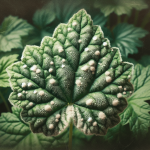This post may contain affiliate links. As an Amazon Associate, we may earn commissions from qualifying purchases.
Have you ever walked through a garden and wondered if some of the beautiful plants you see could be harmful? If you’re curious about which plants might pose a danger, you are in the right place.
While many plants add to the scenic beauty and ecological balance of our environment, some can be hazardous if not properly recognized and managed. One such intriguing yet potentially dangerous plant is the Castor Oil Plant, also known by its scientific name Ricinus communis.
What is the Castor Oil Plant?
The Castor Oil Plant, or Ricinus communis, is a fascinating plant with a mix of beneficial and detrimental properties. Native to the southeastern Mediterranean Basin, Eastern Africa, and India, it is now widely cultivated in various parts of the world.
Physical Characteristics
The Castor Oil Plant is known for its striking appearance. Here are some key features:
- Leaves: Large, palmate leaves that can have a reddish or purplish tinge.
- Flowers: Small, greenish to reddish flowers that usually grow in clusters.
- Seeds: The seeds are glossy and mottled, often appearing in shades of brown and gray.
Here’s a summary of these characteristics in a table for clarity:
| Feature | Description |
|---|---|
| Leaves | Large, palmate, reddish/purplish tinge |
| Flowers | Small, greenish to reddish, in clusters |
| Seeds | Glossy, mottled, brown and gray |
Habitat
The Castor Oil Plant thrives in tropical and subtropical regions but can adapt to a variety of climates. In the UK, it is often grown as an ornamental plant in gardens and parks due to its aesthetic appeal.
The Poisonous Aspects of the Castor Oil Plant
While the plant has its uses, it is important to exercise caution due to its toxic components. The seeds of Ricinus communis contain ricin, a potent toxin.
Ricin: The Dangerous Compound
Ricin is a highly toxic protein that can cause severe health issues, even in small doses. The seeds of the Castor Oil Plant are particularly dangerous if ingested.
Symptoms of Ricin Poisoning
If you or anyone else accidentally ingests ricin, the onset of symptoms can be swift and severe. Here are some potential symptoms:
- Initial Symptoms: Nausea, vomiting, diarrhea, abdominal pain
- Severe Symptoms: Dehydration, decreased urine output, hypotension, organ failure
A table summarizing these symptoms might help keep this information handy:
| Symptoms | Description |
|---|---|
| Initial Symptoms | Nausea, vomiting, diarrhea, abdominal pain |
| Severe Symptoms | Dehydration, decreased urine output, hypotension, organ failure |
What to Do in Case of Poisoning
If you suspect ricin poisoning, it’s crucial to seek medical attention immediately. There is no specific antidote for ricin, and treatment is generally supportive care to manage symptoms.

Benefits of Castor Oil
Interestingly, despite its toxic seeds, the Castor Oil Plant has been cultivated for the extraction of castor oil, which has numerous applications. When properly processed, castor oil is safe and offers several benefits.
Uses of Castor Oil
- Medicinal Uses: Used as a laxative, anti-inflammatory agent, and in the treatment of skin conditions.
- Industrial Uses: Used in the production of lubricants, soaps, and biofuels.
The dual nature of the Castor Oil Plant makes it a subject of great interest and importance.
Safe Handling Practices
When growing or handling the Castor Oil Plant, there are safety measures you can take to minimize risks:
- Plant Location: Plant it in areas less accessible to children and pets.
- Protective Gear: Wear gloves when handling the plant to avoid direct contact with seeds.
- Proper Storage: Store extracted seeds safely out of reach.
Castor Oil Plant in the United Kingdom
The UK’s temperate climate allows the Castor Oil Plant to thrive, making it a common sight in gardens and decorative landscapes. Despite the beauty it adds to these spaces, it’s vital to recognize the potential health hazards.
Identifying the Castor Oil Plant in the UK
While it can blend in with other ornamental plants, recognizing its distinct features can help you stay cautious. The large, striking leaves and the appearance of its seeds are key identifiers.
Public Awareness and Education
Efforts to educate the public about the dangers of the Castor Oil Plant are essential. Gardening clubs, educational websites, and local health departments often provide resources on identifying and safely managing toxic plants.
Regulations and Recommendations
In some areas, growing the Castor Oil Plant may be subject to regulations or recommendations to ensure public safety. Checking with local authorities can provide guidance on best practices.

Conclusion: A Blend of Caution and Curiosity
The Castor Oil Plant is a remarkable example of nature’s duality—beautiful yet potentially harmful. By understanding its characteristics, benefits, and dangers, you can appreciate its place in our ecosystems while taking necessary precautions. Stay informed, and you can enjoy the beauty of the Ricinus communis without falling victim to its toxic side. Knowledge and awareness are your best defenses against the hidden perils of this and other poisonous plants.








